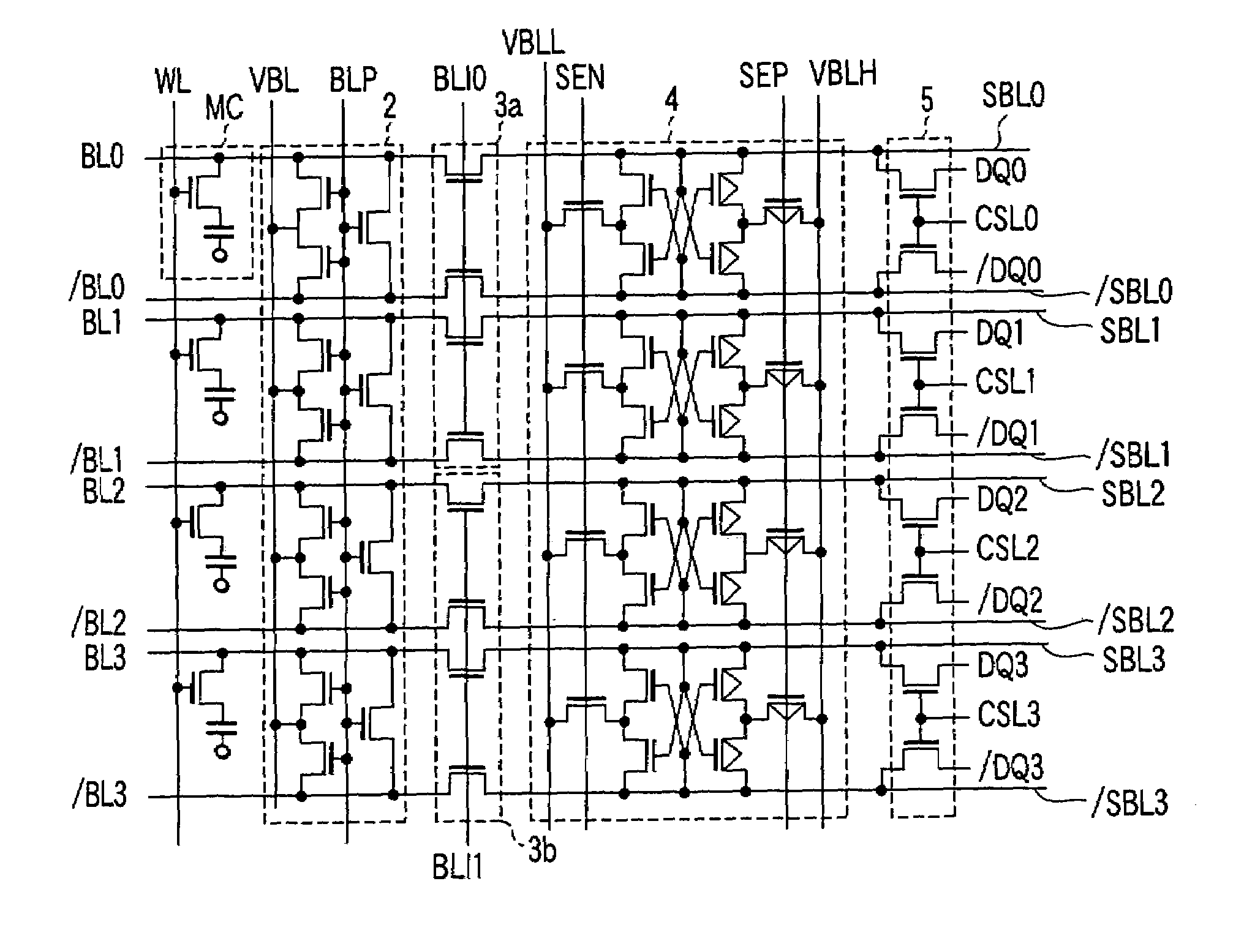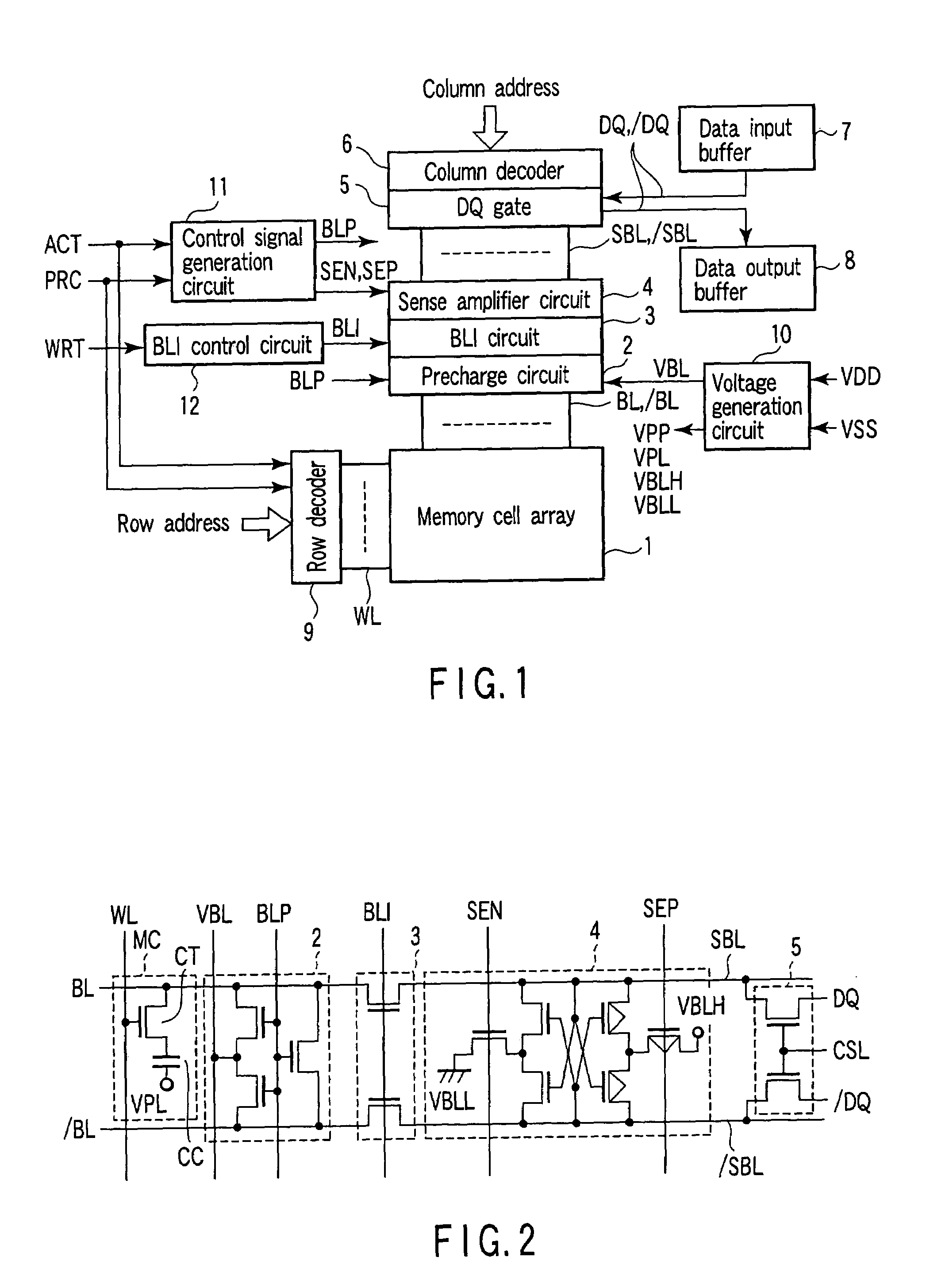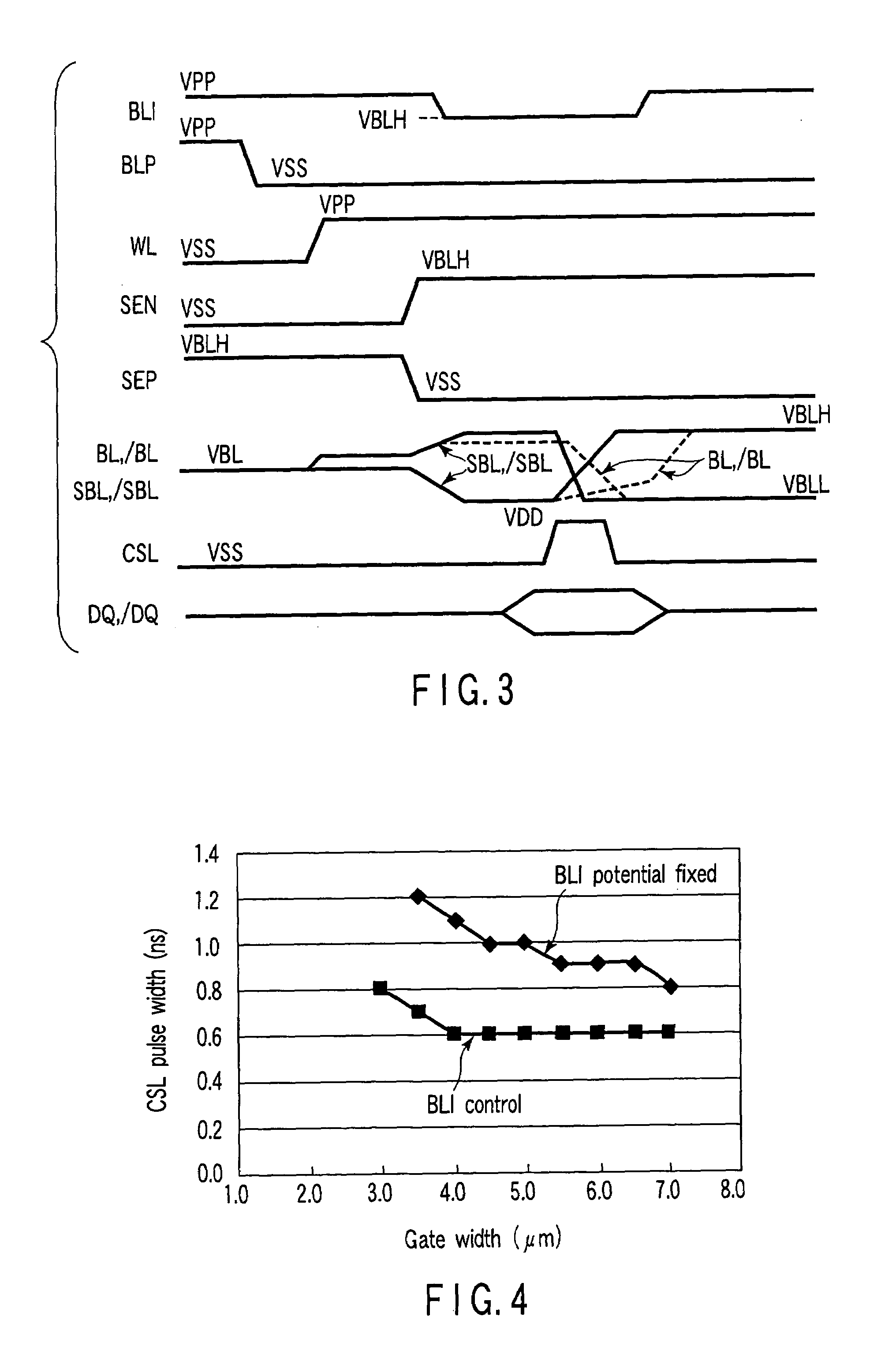Semiconductor memory device
a memory device and semiconductor technology, applied in semiconductor devices, digital storage, instruments, etc., can solve the problems of increasing the leakage of cells caused by the fall of threshold voltage, the difficulty of securing a cell capacity or suppressing leakage current, and the likely large problem of power supply voltage falling
- Summary
- Abstract
- Description
- Claims
- Application Information
AI Technical Summary
Benefits of technology
Problems solved by technology
Method used
Image
Examples
first embodiment
[0104]FIG. 1 is a block diagram showing a main portion of a semiconductor memory device according to a first embodiment of the invention. This semiconductor memory device comprises a memory core unit constituted of a memory cell array, a row decoder, a sense amplifier circuit, a precharge circuit and a bit line isolation (BLI) circuit, and another peripheral logic portion. Referring to FIG. 1, the memory cell array 1 is disposed by arranging memory cells MC in a matrix form. The precharge circuit 2 is connected to the memory cell array 1 via a bit line pair BL, / BL. The precharge circuit 2 precharges a bit line to a precharge voltage VBL.
[0105]A sense amplifier bit line pair SBL, / SBL is disposed corresponding to each bit line pair BL, / BL. The bit line pair BL, / BL and the bit line pair SBL, / SBL are interconnected by the bit line isolation (BLI) circuit 3. The sense amplifier circuit 4 is connected to the bit line pair SBL, / SBL. The sense amplifier circuit 4 amplifies data of the...
second embodiment
[0140]According to a second embodiment, a BLI circuit 3 comprises a transfer gate constituted of NMOS and PMOS transistors.
[0141]FIG. 5 is a circuit diagram of a semiconductor memory device according to the second embodiment of the invention. Referring to FIG. 5, the BLI circuit 3 comprises two transfer gates TG1, TG2. The transfer gates TG1, TG2 are configured by connecting NMOS and PMOS transistors in parallel.
[0142]A BLI control circuit 12 generates bit line isolation signals NBLI and PBLI for controlling resistance values of the transfer gates TG1, TG2. The signal NBLI is input to gates of the NMOS transistors of the transfer gates TG1, TG2. The signal PBLI is input to gates of the PMOS transistors of the transfer gates TG1, TG2. Other components are similar to those of FIG. 1, and thus a block diagram thereof will be omitted.
[0143]FIG. 6 is a timing chart of the semiconductor memory device shown in FIG. 5. The BLI control circuit 12 normally generates a bit line isolation signa...
third embodiment
[0157]FIG. 7 is a block diagram showing a main portion of a semiconductor device according to a third embodiment of the invention.
[0158]The semiconductor memory device comprises a CSL detection circuit 13. A column selection signal CSL generated by a column decoder 6 is input to the CSL detection circuit 13. The CSL detection circuit 13 detects timing of deactivating a signal CSL. In other words, it detects falling of the signal CSL. The CSL detection circuit 13 inputs a trigger signal CSLT to a BLI control circuit 12.
[0159]Upon reception of the signal CSLT from the CSL detection circuit 13, the BLI control circuit 12 returns a potential of the signal BLI from VBLH to VPP.
[0160]FIG. 8 is a timing chart of the semiconductor memory device shown in FIG. 7.
[0161]When the signal CSL is changed from a “L” level (VSS) to a “H” level (e.g., VDD), data of the bit line pair SBL, / SBL is reversed by data transferred from the data line pair DQ, / DQ, and the reversed data is held in the sense am...
PUM
 Login to View More
Login to View More Abstract
Description
Claims
Application Information
 Login to View More
Login to View More - R&D
- Intellectual Property
- Life Sciences
- Materials
- Tech Scout
- Unparalleled Data Quality
- Higher Quality Content
- 60% Fewer Hallucinations
Browse by: Latest US Patents, China's latest patents, Technical Efficacy Thesaurus, Application Domain, Technology Topic, Popular Technical Reports.
© 2025 PatSnap. All rights reserved.Legal|Privacy policy|Modern Slavery Act Transparency Statement|Sitemap|About US| Contact US: help@patsnap.com



